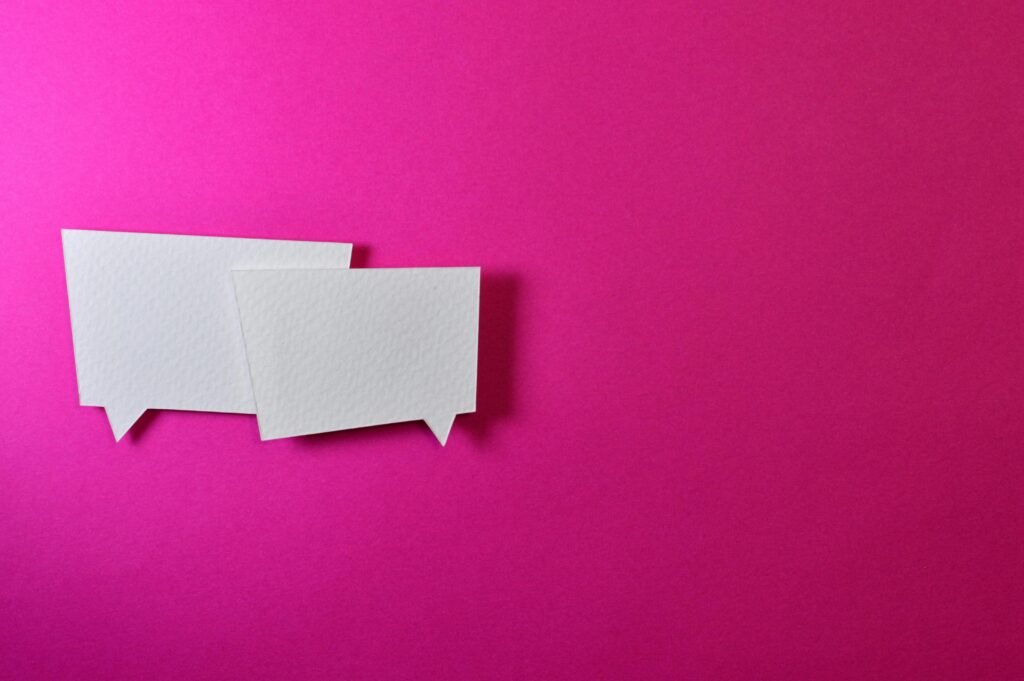In today’s digital world, our minds often feel overwhelmed by constant notifications and endless scrolling. You might notice your stress levels rising and your focus slipping. A digital detox can help you regain mental balance and improve your well-being.
Taking regular breaks from technology can reduce anxiety, enhance sleep quality, and boost your mood. By stepping away from screens, you give your brain a chance to rest and reset. This break allows you to reconnect with the physical world around you and the people in it.
Digital detox programs offer structured ways to unplug and recharge. These programs can teach you how to create healthy boundaries with technology. You’ll learn strategies to use digital tools more mindfully, helping you achieve better mental health in our connected age.
Understanding Digital Saturation
Digital saturation affects our daily lives and mental health. It’s important to recognize when technology use becomes too much and how it impacts our well-being.
The Digital Landscape and Its Impact on Mental Health
Our world is filled with screens and devices. Many people spend hours each day looking at phones, computers, and TVs. This constant use of technology can affect how we think and feel.
Too much screen time may lead to:
- Sleep problems
- Trouble focusing
- Feeling anxious or sad
- Less time for in-person connections
Studies show that excessive digital device use can make you feel more stressed. It can also make existing mental health issues worse.
But technology isn’t all bad. It can help you stay connected with loved ones and learn new things. The key is finding the right balance.

Recognizing Signs of Digital Overload
You might be experiencing digital overload if you notice these signs:
- You check your phone as soon as you wake up
- You feel anxious when you can’t access your devices
- You have trouble focusing on tasks without checking social media
- Your neck or eyes hurt from looking at screens too much
Digital overload can affect your well-being. You might feel more tired, irritable, or have trouble sleeping. Some people even feel lonely despite being always “connected” online.
It’s okay to take breaks from technology. Pay attention to how you feel when using devices. If you notice these signs, it might be time for a digital detox.
Benefits of Digital Detoxification
Taking a break from digital devices can improve your mental health and daily life. A digital detox offers several advantages that can help you feel better and do more.
Enhancing Focus and Productivity
A digital detox can boost your ability to concentrate and get things done. When you step away from constant notifications and distractions, your mind has space to think clearly. This can lead to better work quality and faster task completion.
You might notice:
- Improved attention span
- Less multitasking
- Increased creativity
Try setting specific times to check emails and messages. This helps you stay focused on important tasks without constant interruptions. You could also use apps that block distracting websites during work hours.
Limiting screen time can reduce anxiety and enhance mindfulness. This allows you to be more present in your work and daily activities.
Improving Sleep Quality and Mental Clarity
Digital devices can interfere with your sleep patterns. The blue light from screens can disrupt your body’s natural sleep-wake cycle. By avoiding screens before bedtime, you can improve your sleep quality.
Benefits of better sleep include:
- Sharper thinking
- Better mood
- Increased energy
Try these tips:
- Stop using devices 1-2 hours before bed
- Use blue light filters on your devices
- Keep phones and tablets out of your bedroom
Deeper, more restorative sleep is key for both mental and physical health. When you sleep better, you think more clearly and handle stress more effectively.

Fostering Stronger Personal Relationships
Constant device use can pull you away from face-to-face interactions. A digital detox gives you more time to connect with people in person. This can lead to deeper, more meaningful relationships.
You might experience:
- More engaging conversations
- Stronger bonds with family and friends
- Improved social skills
Make an effort to have device-free meals or outings with loved ones. This allows for undistracted quality time and helps build stronger connections.
Taking a break from screens can help you be more present in your relationships. You’ll likely find yourself more attuned to others’ emotions and needs, leading to better understanding and empathy.
Practical Strategies for Disconnecting
Taking a break from digital devices can help you find balance and peace. Here are some helpful ways to step back from technology and reconnect with yourself and others.
Establishing Tech-Free Zones and Times
Set up areas in your home where devices aren’t allowed. The dinner table and bedroom are good places to start. This helps create spaces for face-to-face talks and better sleep.
Pick times each day to put away your phone and computer. You could try a “digital sunset” an hour before bed. Or have a tech-free morning routine to start your day calmly.
Use apps or settings on your devices to limit screen time. Many phones now have built-in tools to track and control your usage. This can help you stick to your goals.
Mindful Engagement with Technology
Be aware of why you’re using tech. Ask yourself if you really need to check your phone or if it’s just a habit.
Set clear goals for your online time. Decide what you want to do before opening an app or website. This can help you avoid endless scrolling.
Take regular breaks when using devices. The 20-20-20 rule can help: every 20 minutes, look at something 20 feet away for 20 seconds. This reduces eye strain and reminds you to pause.
Replacement Practices and Offline Hobbies
Find fun things to do that don’t need screens. Reading books, doing puzzles, or playing board games can be great alternatives.
Get moving with outdoor activities. Going for walks, biking, or playing sports can improve your mood and health.
Try creative hobbies like drawing, knitting, or gardening. These can help you relax and express yourself without technology.
Connect with others in person. Have coffee with a friend or join a local club. Real-life interactions can be more fulfilling than online chats.
Make a list of offline activities you enjoy. Keep it handy for times when you’re tempted to use your devices out of boredom.
Cultivating A Balanced Digital Lifestyle
Finding harmony between your online and offline life is key to mental well-being. By setting limits, connecting with nature, and working towards clear goals, you can create a healthier relationship with technology.
Setting Boundaries with Technology
Start by making rules for your device use. Pick times when you won’t use your phone or computer, like during meals or before bed. Try putting your phone away an hour before sleep to help your mind relax.
Use apps that track your screen time. Seeing how much you use your devices can help you cut back. Set daily limits for social media and other apps that tend to eat up your time.
Create tech-free zones in your home. Keep gadgets out of your bedroom to improve your sleep. Make the dinner table a no-phone area to help you focus on family time and real conversations.
Integrating Nature and Offline World
Spend time outside every day. Even a short walk can help clear your mind and reduce stress. Unplugging allows you to be more present in the moment and connect with your surroundings.
Try outdoor hobbies that don’t need screens. Gardening, hiking, or bird watching can help you appreciate nature and forget about your devices for a while.
Meet friends in person instead of just chatting online. Face-to-face talks can be more satisfying and help build stronger bonds. Plan regular offline activities with loved ones to stay connected without technology.
Maintaining Ongoing Goals for Digital Harmony
Set clear, achievable targets for your digital use. For example, aim to reduce your daily screen time by 30 minutes each week. Keep track of your progress in a journal or app.
Learn new offline skills to replace online time. Pick up a musical instrument, try painting, or learn to cook. These activities can be fun and rewarding without needing a screen.
Review your digital habits regularly. Check in with yourself each month to see how you feel about your tech use. Adjust your goals as needed to keep improving your digital balance.
Remember to be kind to yourself. Changing habits takes time. Celebrate small wins and don’t get discouraged if you slip up. Keep working towards a healthier relationship with technology one step at a time.
Addressing Challenges and Support Systems
Staying connected while reducing screen time can be tricky. Here are some ways to manage digital detox challenges and find support along the way.
Navigating Social Connections and FOMO
Fear of missing out (FOMO) can make it hard to step away from social media. You might worry about losing touch with friends or missing important updates. To ease these concerns:
• Set specific times to check social media, like once in the morning and once at night.
• Let close friends know you’re cutting back on screen time. Ask them to call or text for urgent matters.
• Plan more in-person meetups to strengthen real-life connections.
Remember, true friends will understand and support your efforts to improve your well-being.
Online Therapy and Community Collaboration
Digital tools can support mental health when used mindfully. Online therapy offers flexible, accessible support:
• Choose platforms with strong privacy measures to protect your information.
• Set regular appointment times, treating them like in-person sessions.
• Use video calls when possible to create a more personal connection.
Join online support groups or forums related to digital detox. Sharing experiences and tips with others can boost your motivation and provide helpful strategies.
Building Resilience to Digital Distractions
Training your brain to resist constant notifications takes time and practice. Try these techniques:
- Turn off non-essential notifications on your devices.
- Use apps that block distracting websites during work or study hours.
- Practice mindfulness to increase focus and reduce the urge to check your phone.
Create a “distraction-free zone” in your home where devices are not allowed. Use this space for reading, meditation, or quiet reflection.
Reward yourself for meeting digital detox goals. This positive reinforcement can help build new, healthier habits over time.
Frequently Asked Questions
Digital detoxes can help improve mental health and focus. They offer a break from constant connectivity and allow time for self-reflection and real-world interactions. Let’s explore some common questions about digital detoxes and their impact on mental well-being.
What are the potential psychological benefits of participating in a digital detox?
A digital detox can reduce stress and anxiety. You might feel more relaxed and present in your daily life. Many people report better sleep and improved mood after taking a break from screens.
Reduced screen time can also lead to more meaningful face-to-face interactions. This can boost your sense of connection and support.
How does the length of a digital detox impact mental health outcomes?
The length of your digital detox can affect its benefits. Short breaks, like a day or weekend, can provide quick relief from digital stress. Longer detoxes, lasting a week or more, may lead to more lasting changes in habits and outlook.
You might notice improved focus and less anxiety even after a brief detox. Longer periods away from screens could help reset your relationship with technology more deeply.
In what ways can a digital detox enhance focus and cognitive function?
Taking a break from constant notifications can improve your ability to concentrate. You may find it easier to complete tasks without digital distractions.
Your memory and problem-solving skills might also get better. Spending less time on screens allows your brain more time to process information and think creatively.
How might individuals prepare for a successful digital detox?
- Plan ahead for your digital detox.
- Let friends and family know you’ll be less available.
- Set clear goals for what you want to achieve during your time offline.
Find alternative activities to replace screen time. This could include reading, exercising, or trying a new hobby. Having a plan can make your detox more enjoyable and effective.
Can periodic digital detoxes help to alleviate symptoms of digital overload?
Regular digital detoxes can indeed help manage feelings of being overwhelmed by technology. You might experience less eye strain, reduced neck and back pain, and improved posture.
Mental wellness can also improve with periodic breaks from screens. You may feel more in control of your time and less dependent on digital devices.
What strategies can be employed to maintain mental equilibrium following a digital detox?
After your detox, set clear boundaries for technology use. Designate certain hours as “screen-free” time each day.
Try using apps that track your screen time. This can help you stay aware of your habits. Creating a balance between online and offline activities is key to maintaining the benefits of your detox.





